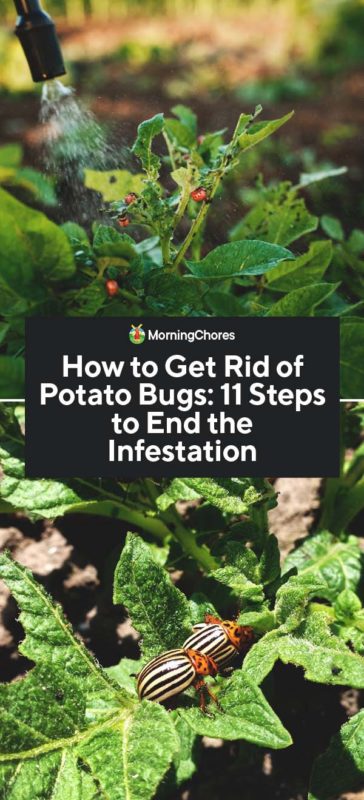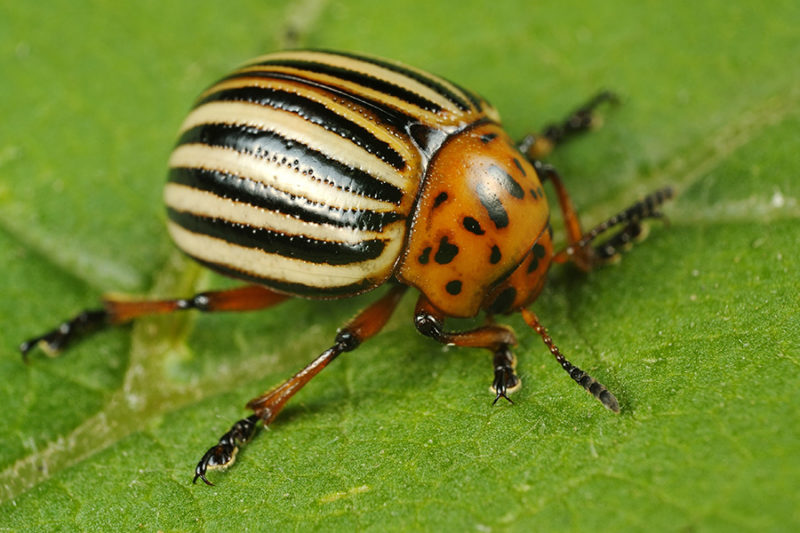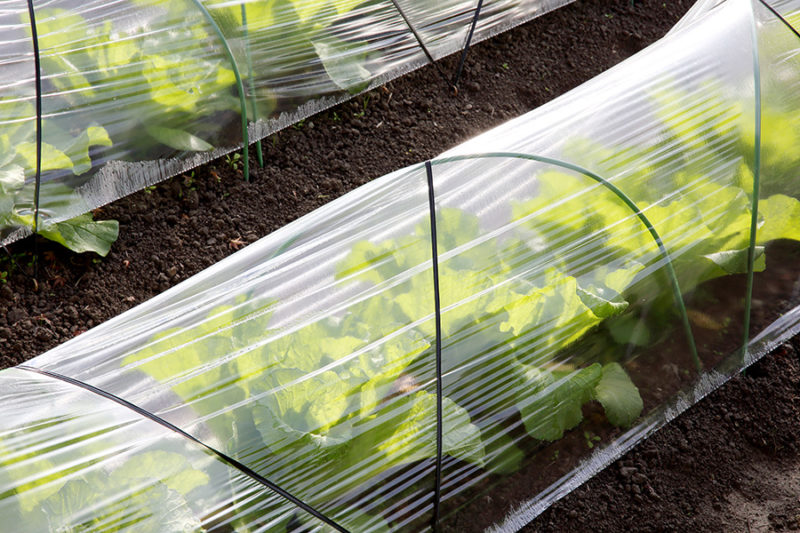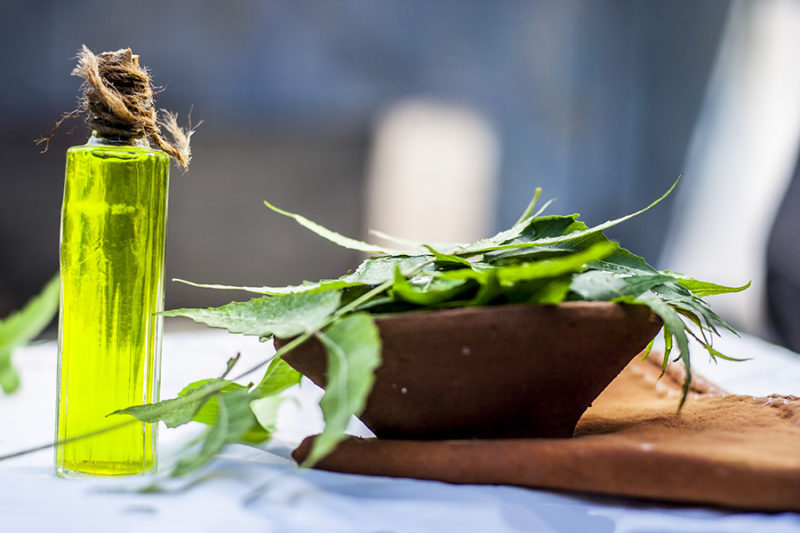How To Get Rid Of Potato Bugs
Last season, potato bugs – sometimes called potato beetles or Colorado potato beetles – showed up in my garden for the first time. I freaked out; I wanted to figure out how to get rid of potato bugs without using any harmful pesticides that could seep into the vegetables and herbs in my garden.
Many gardeners know that the potato beetle is well-known for its ability to develop resistance to insecticides and pesticides. That means its one of the more challenging garden pests to get rid of out of your garden beds, so I had my work cut out for me.
Fortunately, I discovered the trick to eradicating this pest in a way that doesn't destroy my beloved plants. Even better, now I know how to keep them from attacking my garden in the first place. Read on to learn everything you need to know.

What is a Potato Bug?
Potato bugs (Leptinotarsa decemlineata) are a common pest in garden beds. Colorado potato beetles, in both adult and larval forms, chew the leaves on garden plants and can defoliate entire crops if you don't get rid of them quickly.
Potato bugs can also reduce the yield that you have in your garden beds. In some cases, they can kill your entire plants and destroy any potential harvest you might have in your garden.
The Colorado potato beetle can be found in most parts of the United States except for California, Alaska, Nevada, and Hawaii. This pest also can be found in parts of Europe and Asia.
Common Host Plants
Since they're called potato bugs, you might believe that they're just common in potato plants. They like other host plants in the nightshade family as well, such as:
- Tomatoes
- Peppers
- Eggplants
As you might guess, potato beetles love potato plants. They decimated my entire crop and left us with just a few small puny potatoes. It wasn't even enough to make one pot of mashed potatoes.
Talk about disappointing.
How Do I Identify a Potato Bug?

Before you get rid of them, you have to be able to identify a potato bug. The adult bugs are 1/3 inch long, round, yellowish-orange beetles with black stripes on their wings and black spots behind the head.
The larvae are 1/8 to 1/2 inch long and red with a black head and legs. They become yellowish-red or orange with two rows of black spots on each side of the body as they get older.
The Life Cycle of a Potato Bug
It's essential to understand the life cycle of a potato bug to get rid of them in your garden. Overwintering beetles hibernate in the soil or garden debris until they emergy in the spring. At this point, the beetles cannot fly because they don't have enough energy and must walk in the beds to find suitable host plants.
Female potato bugs lay orange-yellow eggs in clusters on the underside of the leaves on the host plants. Those eggs hatch in 4-15 days, depending on the external temperature. Then, those little larvae start to feed on the foliage for the next month.
As the larvae mature, they start to drop from the plant, dig into the soil, and then emerge as adult 5-10 days. Each year, 1-3 generations produce.
How to Get Rid of Potato Bugs
Let's take a look at how to get rid of potato bugs. There are two vital steps that gardeners need to take. First, you have to take preventative measures to keep them away. If you're lucky, then you won't have a problem with them at all.
Then, we'll take a look at methods of how to get rid of potato bugs. Most importantly, we will focus on organic methods because we don't want to spray potentially harmful chemicals on our vegetable plants. Those chemicals seep into the veggies that grow on the plants, and you don't want to eat that.
Let's get started!
Preventative Measures to Keep Potato Bugs Away
I prefer to take preventative measures rather than removal methods because they seem to work better. If you know people local to you have problems with potato bugs, you need to be especially active in your preventative steps.
1. Take a Look Each Day
First, make sure to take a few minutes each day to walk your rows of plants to scan for adult potato beetles. Take a look at the leaves on the plant, watching for holes. It's much easier to get ahold of the population if you can catch them when they first appear.
2. Plant Resistant Cultivars
If potato bugs are common in your area or you've had trouble before, it's smart to plant resistant cultivars. These cultivars are less suspectable to infestations, and that reduces the risk that these pests will devour the plants.
3. Protect Your Plants

Another smart tactic is to protect your plants with row covers throughout the spring. All you need is a thin netting or row cover to keep the pests off.
4. Use Crop Rotation
Potato beetles can be managed through crop rotation. Try planting a non-nightshade crop that next year after you plant a potato crop.
5. Mulch Deeply
To help reduce the adult population and stop the movement of overwintering adults, you need to spread 2-3 inches of mulch over the soil. Use clean straw or hay as soon as plants emerge to stop the adult potato bugs from arising out of the ground.
Organic Methods for Removal
So, you ended up with some potato bugs on your plants. Join the unfortunate club; we're here for you.
If you want to get rid of these stubborn pests, you have to be active. Trust me, you can't just spray something once, and everything is better. You will need to take several steps and keep at it to get rid of these little bugs. They're more stubborn than a toddler who wants the pink fork rather than the blue one.
One thing to note is that potato beetles quickly grow resistant to chemical insecticides. That's why it's important not to use them. Most of the time, they won't work well, anyway.
1. Remove Adults By Hand
The first step that you want to do is remove the adult beetles by hand. This is the most frustrating and time-consuming one that you need to take. I can tell you that it's not a fun step, but it's vital to get a hold on the infestation.
Head out to the garden in the early morning, which is always my favorite time to go into my garden anyway. Take a bucket with warm soapy water, and make sure you wear garden clothes. Pick the adult beetles off of the plants and drop them into the soapy water in the bucket.
2. Remove Eggs by Hand
Next, check the underside of the leaves for eggs. Look for clusters of eggs against the green of the leaves. They're easy to catch. Just make sure you check all of the leaves, even the small ones. Toss the eggs into the same soapy water that you are putting the adult bugs.
As long as you to continue to find adult bugs on your plants, you need to continue to look for eggs. Check for eggs every few days. Once you stop finding adult bugs, you can stop looking for the eggs.
3. Introduce Beneficial Insects
Releasing beneficial insects into your garden beds is a practical, natural way to get ahold of the bad pest population. Insects such as ladybugs, spined soldier bugs, lacewings, and nematodes feed on the eggs and the early larval stages. Nematodes attack the immature stages that develop in the soil.
4. Try Diatomaceous Earth
It's hard not to love diatomaceous earth (DE). It's versatile and can be used in so many different situations. Every gardener should have some on hand. Another step to defeating potato bugs is using diatomaceous earth to dust lightly over the plants as evenly as possible. Do this wherever you find pests.
Some people think that DE doesn't work too well, but I've found great success with it, especially for the smaller larva. I love that it's easy to use. You don't have to mix with water or spray anything. Plus, it's safe to use at any time of the day. Just don't use too much because it could kill some of the good bugs that you want in your garden.
5. Give Neem Oil a Try

Neem oil is a key ingredient found in many insecticides. It's created from the neem trees of Africa and Asia. You can purchase concentrated neem oil, and it's approved for organic use. You can use neem oil on your affected plants.
However, a word to the wise is only to use neem oil as a last resort because it may also kill off the beneficial insects along with the potato beetles.
6. Spray with a Microbial Solution
Another way that you can get rid of potato bugs is to spray your plants with a microbial solution. Bacillus thuringiensis is the most popular choice. It's a natural bacterial disease that you can use to control potato beetles if applied to the insects while they're still in the larval stage. Be sure to apply BT every few days when the egg clusters start to hatch.
Removing Potato Bugs for Good
Potato bugs are one of the most frustrating pests that you can encounter in your garden. Most chemical methods won't work, and each adult continues to create more of these little evil bugs. Learning how to get rid of potato bugs is essential for any gardener. Remember that preventative measures are the most important to help avoid an infestation or to start one before it gets too bad. Potato bugs are no fun, but you can get control over them.
Was this article helpful?
Yes No
How To Get Rid Of Potato Bugs
Source: https://morningchores.com/how-to-get-rid-of-potato-bugs/
Posted by: braithwaitemovence.blogspot.com

0 Response to "How To Get Rid Of Potato Bugs"
Post a Comment